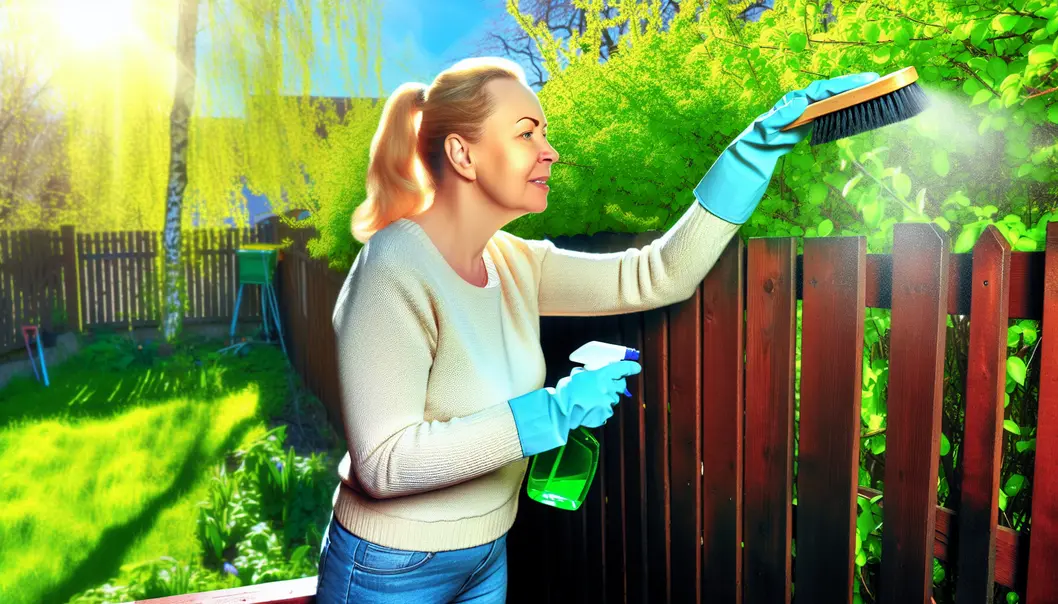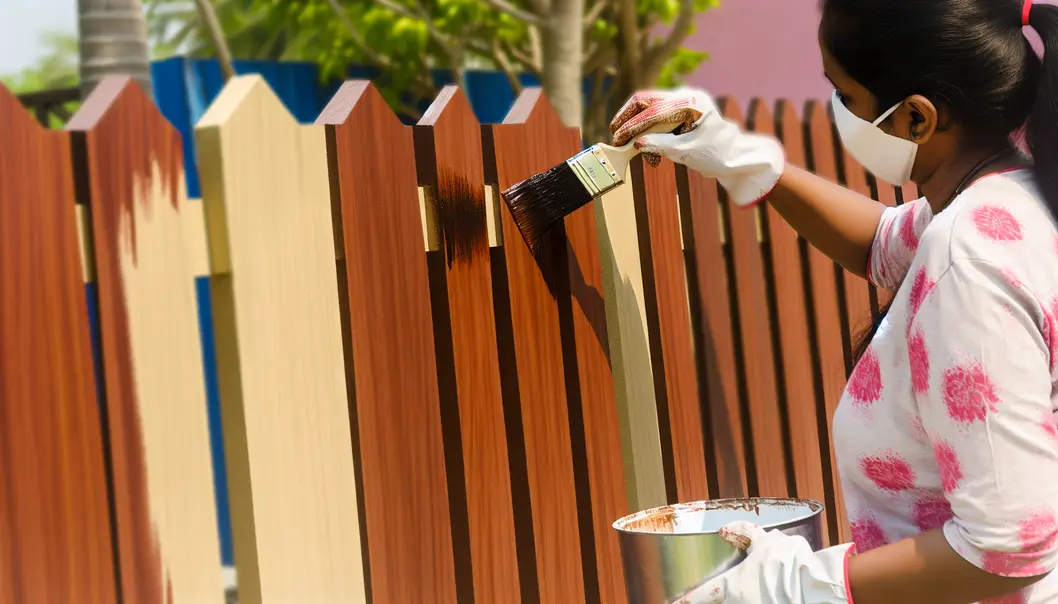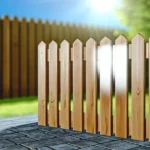A sturdy fence enhances your home’s curb appeal and provides security. However, weather elements such as rain, wind, and sun can deteriorate it over time. Implementing preventative maintenance is key to preserving your fence’s integrity and appearance. Regular upkeep not only prevents costly repairs but also extends the lifespan of your investment. This guide offers practical tips for homeowners to protect their fences against weather damage, emphasizing the importance of proactive care and timely fence repair to maintain safety and beauty.
Seasonal Inspections and Cleaning for Fence Longevity

As seasons shift, homeowners should make routine inspections and cleanings a vital part of their fence maintenance. In spring, after the winter months, it’s essential to evaluate the condition of the wooden fence. Armed with a sturdy pair of gloves, a ladder, a flashlight, and a garden hose, the homeowner steps into their lush backyard, inspecting for signs of weather-related wear.
Carefully examining each board, they look for cracks, splinters, or areas where the paint or stain has begun to peel. Winter’s moisture can cause wood to swell or warp, making it crucial to catch problem spots early. During this inspection, the homeowner clears away fallen leaves, twigs, or any debris lodged between fence boards, which can trap moisture and promote rot.
Moving into summer, the focus shifts towards thorough cleaning. Using a gentle brush and a garden hose, they start by removing surface dirt, dust, and pollen accumulated over the warmer months. This not only revitalizes the appearance but also helps prevent the buildup of mold or mildew. For stubborn stains, a mild cleaning solution can be applied, ensuring the wood’s surface remains healthy and free from moisture traps.
In fall, as leaves fall and temperatures begin to drop, the homeowner repeats the inspection process. Falling debris can obscure damage and increase moisture retention, accelerating deterioration. They pay attention to areas exposed to early frost or heavy rain, which can weaken weak spots. Raking leaves and clearing gutters ensure that water runs away from the fence, reducing the risk of water damage.
Winter inspections become even more critical if the area experiences snow or ice. The homeowner checks for ice damage or frost cracks, especially around aged sections. They remove any ice buildup gently to prevent further stress on the wood. If the fence shows signs of extensive damage or significant wear, this early detection allows proper planning for repairs or preventive treatments.
Throughout these seasonal checks, homeowners develop a keen eye for subtle signs of weather damage. Regular inspections and cleaning form the foundation of weatherproofing strategies, preventing small issues from escalating. Preventative care like this extends a fence’s lifespan, saving money and preserving its beauty year after year. For detailed guidance on additional preventative measures, consult resources on applying protective coatings and proper sealing techniques, ensuring your fence remains resilient against unpredictable weather conditions.
Protective Coatings and Proper Sealing Techniques

Applying a weather-resistant sealant or protective stain is a crucial step in safeguarding your fence against the elements. Visualize a homeowner in a well-lit outdoor setting, standing beside their wooden fence, ready to apply the protective coating. The scene is vibrant, with sunlight casting gentle shadows, emphasizing the importance of proper application for maximum weatherproofing.
To begin, the homeowner thoroughly prepares the surface of the fence, ensuring it is clean and dry. They might use a brush or sprayer, depending on the type of coating chosen. A brush offers precision for detailed areas and edges, while a sprayer can expedite covering larger surfaces evenly. In this scene, the homeowner is using a high-quality brush, applying the sealant in long, consistent strokes along the grain of the wood. This technique helps the sealant penetrate deeply, creating a barrier against moisture and UV damage.
The homeowner takes care to work in overlapping sections, ensuring comprehensive coverage without missed spots. They also pay attention to the direction of application—following the natural lines of the wood—to achieve a smooth, professional finish. Reaching the bottom of each picket and the top of the posts, they ensure no area is left exposed, which could become a weak point during storms or heavy rain.
Sometimes, homeowners opt for a sprayer, especially for larger fences, which can provide a more uniform application. If using a sprayer, it’s essential to maintain a steady hand and consistent distance from the surface to avoid uneven patches. After spraying, a brush can be used to smooth out any drips or thick spots, ensuring an even coat.
The choice of sealant or stain plays a significant role in weatherproofing. Some products offer UV protection, others provide water resistance, and many combine both features. It’s advisable to select a coating suited for your climate and fence material, and to follow manufacturer instructions regarding drying times and reapplication intervals.
By properly applying a protective stain or sealant, the homeowner enhances the fence’s ability to withstand rain, snow, and sun exposure. This preventative maintenance not only preserves the aesthetic appeal but also extends the lifespan of the fence, reducing maintenance costs over time. Regularly maintaining this coating—repeating the process every few years—builds a formidable barrier that protects your property from weather-induced damage.
For more detailed guidance on fence materials and application techniques, you can visit FenceMaster Houston’s fencing information. Properly sealed fences stand as resilient barriers, safeguarding your outdoor space and ensuring your investment remains sturdy and attractive for years to come.
Timely Fence Repair to Prevent Further Damage

Promptly addressing fence damage is vital to preserving your property’s integrity and preventing more extensive weather-related deterioration. Homeowners often overlook small issues like loose rails or broken boards, assuming they can wait until formal repairs are necessary. However, even minor damages can become severe under adverse weather conditions such as heavy rain, strong winds, or snow, which can exacerbate existing vulnerabilities.
Imagine walking through your yard and noticing a few broken fence boards or a section where the rails have become loose. These small issues might seem insignificant, but neglecting them can lead to larger problems. Wind can catch loose panels, causing further breakage or dislodging entire sections. Moisture from rain can seep into cracks, weakening the wood or other materials over time, accelerating decay and rust if metal components are involved.
To prevent deterioration, it’s essential to act swiftly. Start by assessing the damage carefully. Gather necessary tools—such as a hammer, nails, or screws—and set aside some time to repair the fence. For broken boards, remove the damaged sections and replace them with new ones where possible. Secure loose rails or panels with nails or screws, ensuring they are tightly fastened. If you notice rust or corrosion, consider treating these areas to halt the deterioration.
While it may seem simple, proper repair techniques help maintain the fence’s strength and aesthetic appeal. For instance, when handling wooden fences, applying a weatherproof sealant after repairs can add an extra layer of protection against future weather damage. Metal fences or panels should be inspected for rust, which can be sanded off and treated with rust inhibitors.
Addressing issues promptly also reduces the cost and effort needed for more extensive restoration later. Letting minor damage fester can lead to sections collapsing, which compromises security and privacy. Additionally, a well-maintained fence can better withstand storms and harsh weather, extending its lifespan considerably.
Involving professionals for significant repairs or persistent issues ensures that the repair work meets safety standards and lasts longer. Experienced contractors can identify underlying problems, such as erosion at the fence’s base or foundational instability, that might not be obvious at first glance.
Ultimately, consistent inspection and timely repairs are the backbone of weatherproofing your fence. By catching and fixing damage early, you preserve your fence’s durability against weather’s relentless assault. Regular maintenance not only keeps your property looking attractive but also protects your investment over the years. For more in-depth guidance on fencing types and repair techniques, you can visit resources dedicated to fence maintenance and improvement.
Final words
Proactive fence maintenance is vital for homeowners aiming to shield their property from weather damage. Regular inspections, proper sealing, and prompt repairs address vulnerabilities before they escalate. Investing time in preventative care ensures your fence remains robust, attractive, and durable against the elements. Remember, a well-maintained fence not only enhances curb appeal but also saves you money on costly repairs in the future. Prioritize these tips to enjoy a resilient and beautiful fence for years to come.
Crafting commercial & residential fence and gates with precision since 1979. Let us help you protect your investment today!
Learn more: https://www.fencemasterhouston.com/get-estimate.html
About us
Established in the 1970s, Fencemaster is a Houston fence company, we have been a family owned and operated business eager to improve and grow. With our competitive prices, professional craftsmanship, and unmatched commitment to our customers, we always find a way to satisfy your fencing needs. We guarantee our prices, offering only the best materials and workmanship.


